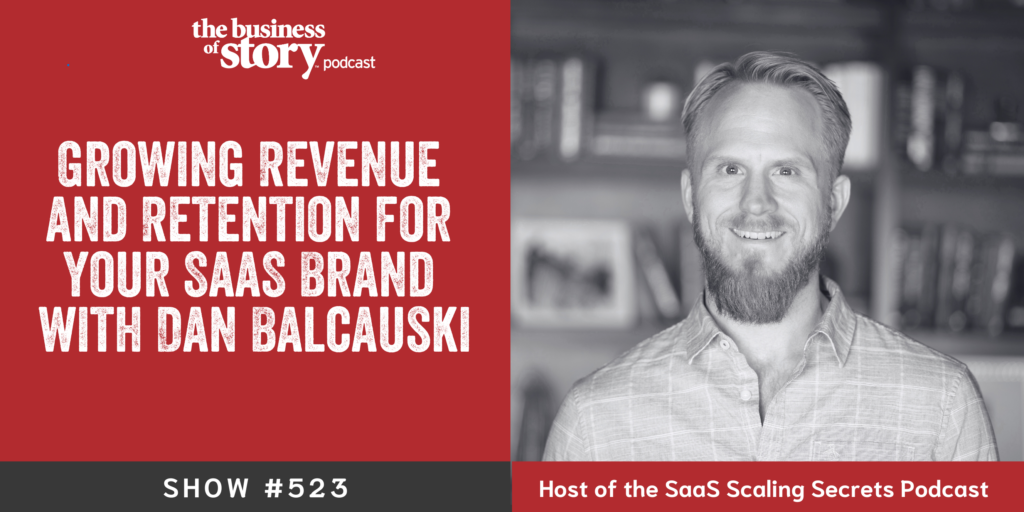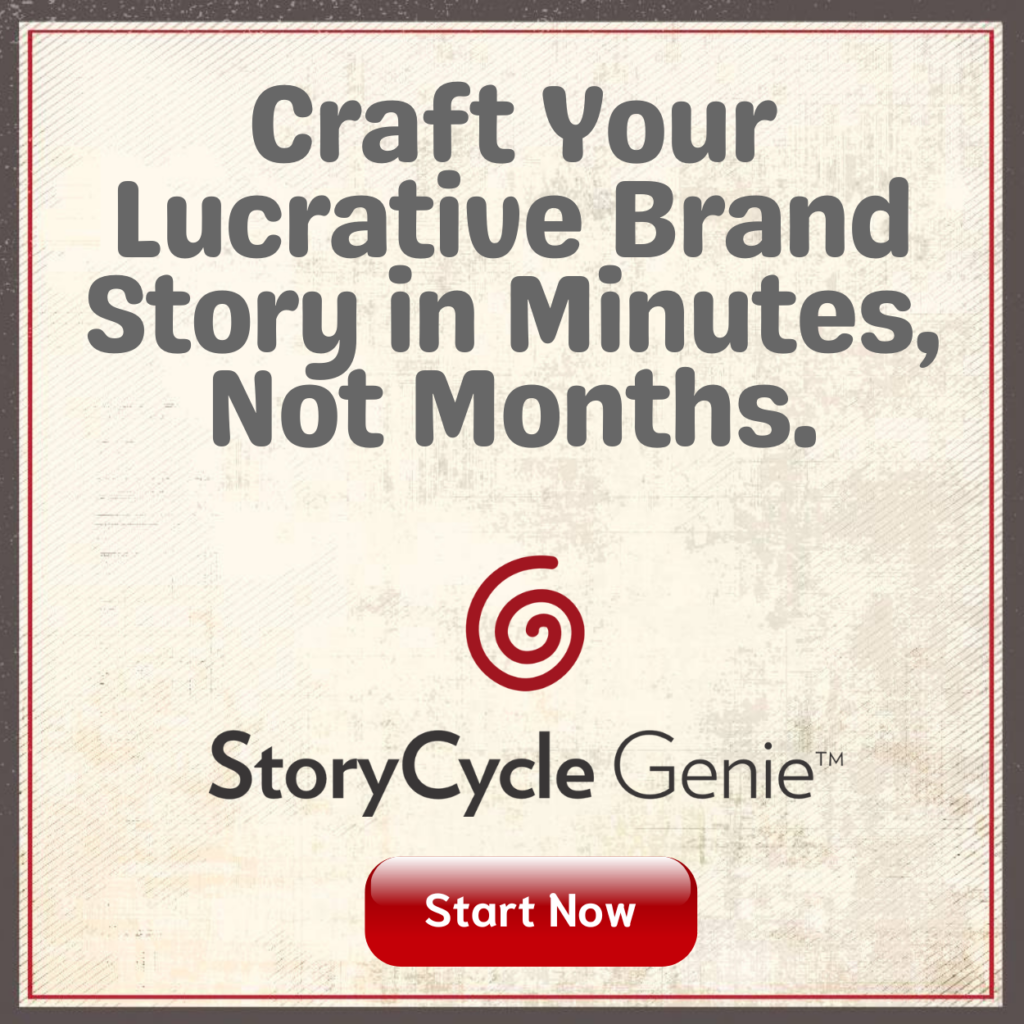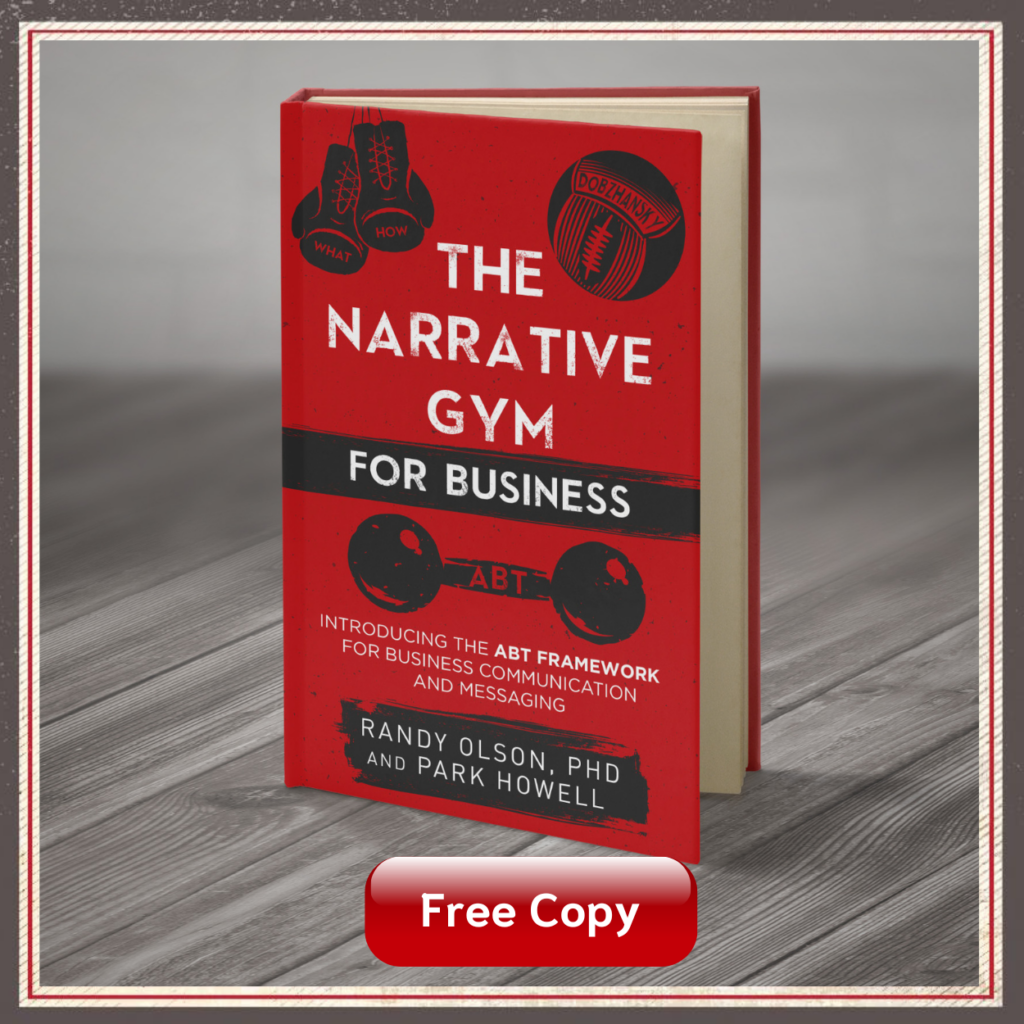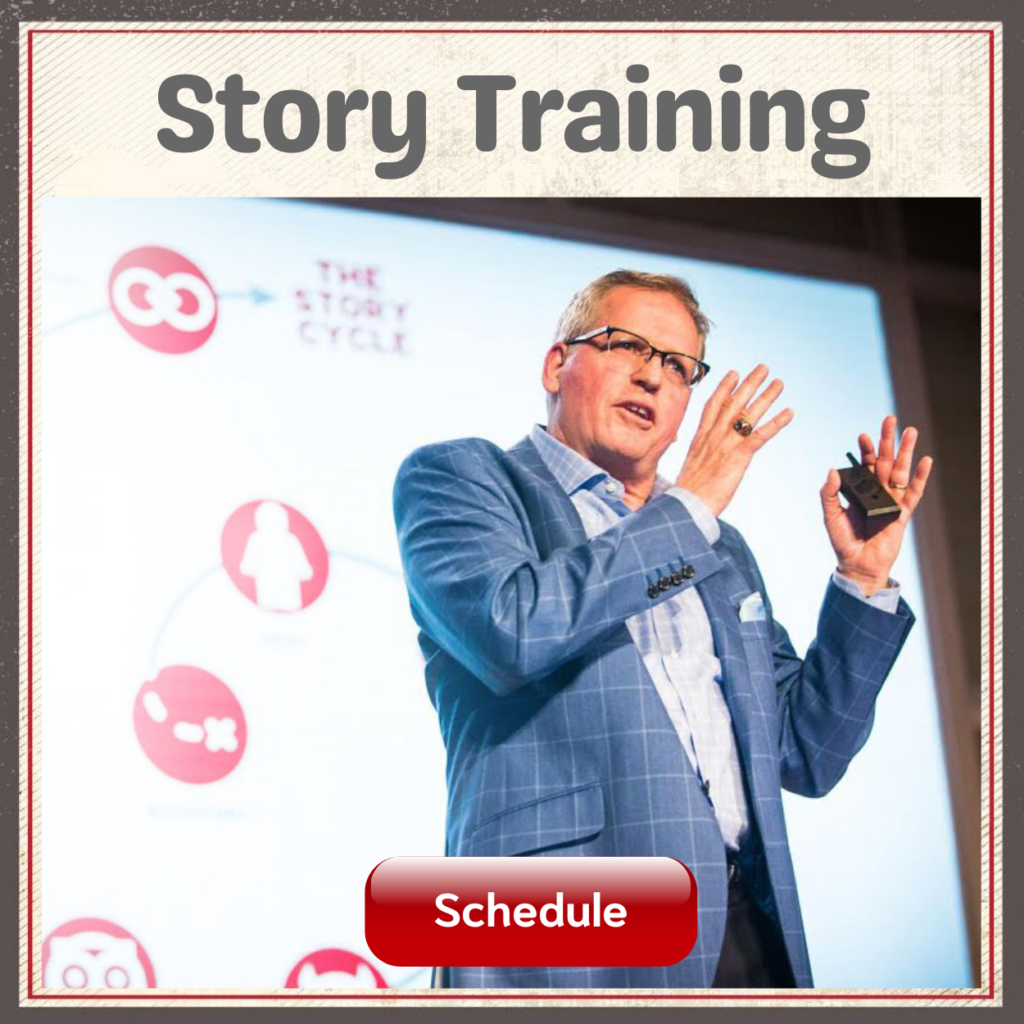Growing Revenue and Retention for Your SaaS Brand with Dan Balcauski

The Value Created in Your Product or Service Pricing Starts With Your Story
You want your pricing to communicate the true value of what you offer and fuel the growth of your business.
If you can find the right story to communicate your subjective price, then your customers will gladly pay for the outcomes you objectively deliver.
But it’s easy to feel overwhelmed and even a little paralyzed because pricing feels like a black box—confusing metrics, vague value, and no clear process to guide you.
That’s why today’s episode is such a game-changer.
Dan Balcauski, Founder of and Chief Pricing Officer at Product Tranquility, a consultancy that helps high-volume B2B SaaS companies define pricing and packaging strategies that drive growth.
He shares how pricing is not just a number—it’s your brand narrative in action. So if you want to price with purpose and confidence, this one’s for you.
Dan Balcauski has helped B2B SaaS CEOs transform pricing from a growth bottleneck into a strategic advantage.
He’s also the host of SaaS Scaling Secrets, a podcast featuring CEOs of B2B SaaS companies who share their scaling insights.
Dan brings a unique cross-functional perspective, blending finance, product management, marketing, and psychology to solve the monetization challenges that most SaaS companies get wrong.
What’s In It For You:
- Pricing is a subjective story told by founders about their product’s worth.
- Pricing blends science and psychology, linking value and price.
- Understanding customer segments is crucial for effective pricing.
- The pricing metric should correlate with the value provided to customers.
- Iterating pricing strategies is essential as the market evolves.
- Focus on delivering value to customers before optimizing pricing.
Chapters:
- 00:00 Introduction to Pricing and Storytelling
- 02:33 Dan’s Journey to SaaS Pricing Expertise
- 08:02 The Concept of Fractional Chief Pricing Officers
- 12:41 Understanding Pricing Metrics and Customer Segments
- 18:40 Exploring the StoryCycle Genie Pricing Model
- 27:47 Unlocking SMB Growth Potential
- 30:14 The Trilemma of Branding: Good, Fast, Cheap
- 35:04 Iterative Pricing: A Continuous Process
- 39:24 Establishing Pricing Governance
- 42:31 Avoiding Revenue Loss: The Value Story
- 45:56 Understanding Willingness to Pay
Links:
Popular Related Episodes You’ll Love:
- How to Develop Your Business Strategy Story to Grow Your Brand and Your People with Shawn Callahan
- How to Clarify Your Brand Story for Deliberate Growth with Park Howell
- How to Refine Your Brand Story Strategy in Minutes, Not Months, to Rocket Your Revenue with Sean Schroeder
Your Storytelling Resources:
Connect with me:
Instagram: https://www.instagram.com/parkhowell/
Facebook: https://www.facebook.com/groups/BusinessOfStory
YouTube: https://www.youtube.com/channel/UC0ssjBuBiQjG9PHRgq4Fu6A
Twitter: https://twitter.com/ParkHowell
LinkedIn: https://www.linkedin.com/in/parkhowell/
Website: https://businessofstory.com/abt/
Transcript of Show:
Park Howell:
Dan, welcome to the show.
Dan Balcauski:
Good to be here, Park. I’m excited for our conversation. Thank you for having me.
Park:
And you mentioned you’re coming to us from Austin, Texas. I was just there last week working with the single largest retired teachers association in America—TRTA—and it was great fun. Their mission is to help save the retirement packages for the incredible teachers who dedicate their lives to kids. So, I just want to give them a shout-out—and to your beautiful city.
Dan:
Well, I appreciate that. My mom is a retired teacher, so I really appreciate that you’re helping those folks out.
Park:
Yeah, well if she’s in Texas, have her check out TRTA. It’s a fantastic program. But I’m glad to have you here. Now, pricing—we’ve never covered it on the show before. You’re my 523rd guest over nine years, and we’ve never really talked about the story around pricing—specifically SaaS pricing.
And when you think about it, pricing is really just a story. It starts with the story that founders, CEOs, and CMOs tell themselves about what their product is worth. Then it’s about how they communicate that story to get buyers to believe in the value. Because, correct me if I’m wrong, pricing is ultimately subjective, isn’t it?
Dan:
That’s absolutely right. And I feel the pressure to do right by my fellow pricing folks, being your first pricing guest! Pricing is this interesting blend of science and psychology. There’s definitely analytics involved, but it’s also about perception.
Value—like beauty—is in the eye of the beholder. Pricing is a measure of desire and motivation: how much someone wants something. You can’t measure that down to ten decimal points. That’s why pricing is such a fascinating field where we get to combine the quantitative with the qualitative.
Park:
We’re going to get deeper into that in a second. But first, I’d love for you to share your somewhat winding path to becoming the SaaS pricing expert you are today. It seems to me that your starts and stops along the way really inform the brilliance of what you do now.
Dan:
It’s definitely been a non-linear journey. I’ve been immersed in the tech and software world for a couple of decades. I started on the engineering side, then moved into engineering management. I worked at a company that built tools for engineers—by engineers. So there wasn’t really a product management function.
As an engineering leader, I was also defining the product roadmap. I remember one time a product marketing person asked, “Why wouldn’t customers just build this themselves?” At first, it seemed like a silly question—we had teams of engineers working on it. But then it clicked: customers don’t necessarily know the complexity or value of what we’re offering.
That led me to think more deeply about comparative advantage—how it’s better to pay a company that specializes in solving that problem, rather than doing it yourself. That sparked the question that changed everything for me: why are these bits we’re shipping valuable to people?
From there, I pursued an MBA, and during that time I interned at a successful Silicon Valley startup. One of my projects was helping the CEO decide whether to adopt a freemium model. This was back in the 2010–2011 freemium craze. I dug into where that model works and where it doesn’t and realized it only succeeds under surprisingly rare conditions.
After my MBA, I became a product leader at several companies, focusing on aligning customer needs, business strategy, and product development. But product teams always have 100x more requests than they can possibly build. Scope creep is real, and sometimes two features are better than 100.
Park:
Exactly. And somewhere along the way, you started getting pulled into pricing conversations, right?
Dan:
Yes, exactly. Product managers didn’t own pricing at my companies—product marketing did. But they often came to me and said, “Hey, I’m good at messaging and positioning, but I don’t know anything about pricing. You’ve got an MBA—help us out.”
I made my share of mistakes trying to apply academic frameworks that didn’t quite fit real-world situations. Then in 2018, I took a sabbatical, traveled the world, and decided to start my own company. I noticed the rise of fractional CMOs and CFOs and thought, “Why isn’t anyone doing this for pricing?” I jumped in and focused on turning pricing from a liability into a strategic advantage.
Park:
And you discovered there was a reason no one else was doing it, right?
Dan:
Exactly. I initially offered a wide range of services, but the market kept asking me for help with pricing. I realized I needed to stop trying to build the market I wanted and instead respond to the one that was actually there.
I also learned why a fractional Chief Product Officer isn’t a thing: product management is hard to tie to measurable outcomes. You can’t measure product people like sales reps or engineers. There’s no simple metric like leads or lines of code.
I pivoted a few times—looked into solving retention issues and product-led growth—but nothing stuck. Then, I started getting consistent inbound requests for pricing help. That’s when I doubled down on it.
Park:
Let’s bring this back to something really practical. We just launched the StoryCycle Genie™ to our beta group yesterday. We’re in soft launch mode now, with a full launch coming after Labor Day.
You say, “The who matters more than the what” when it comes to pricing. What do you mean by that?
Dan:
Most people focus too much on the number—$99, $199, etc. But the more important question is how you structure the offer. In SaaS, that comes down to packaging, which includes your price metric, price model, offer configuration, and price fences.
Getting the metric right—what you charge for—is often more impactful than choosing the actual number. Do you charge per seat? Per API call? Per gigabyte? These decisions should be based on how your customers perceive value, not just on what’s easy to count.
Park:
That leads perfectly into our current setup. We’ve got three pricing tiers, all based on credits. We use credits to manage API costs from the multiple AI agents we tap into. But we’re trying to tell the value story, not the credits story.
We’ve got:
- Startup: $199/month for 200 credits
- Growth: $499/month for 600 credits
- Enterprise: $1,200/month, tailored for larger teams
Users can also buy extra credits if they run out. It’s a hybrid subscription + usage model. What do you think?
Dan:
Let’s focus on the SMB versus the enterprise CMO segments for now. What I’m hearing is you’re offering the same product with different volumes of credits, right?
Park:
Right. Everyone gets access to the full platform—it’s just how many credits they need.
Dan:
Got it. That’s a volume-based model, which is common but not my favorite. Here’s why: credits can be confusing. They make sense internally to manage costs, but customers don’t intuitively understand them. You’re asking people to think in implementation terms—how the sausage is made—rather than value terms.
It’s better to align pricing with something the customer already tracks or cares about. For example, number of products, brand stories, or content assets created. Anything that connects directly to the value you deliver.
Also, you could differentiate packages not just by volume but by capabilities. Enterprise customers might need single sign-on, training, onboarding, data privacy features, etc. These help justify higher per-unit pricing.
Park:
That makes a ton of sense. Especially for SMBs—we’ve found that fewer than 5% of North American businesses do more than $10 million a year. So there’s a huge growth opportunity if they can get their story straight.
With the Genie, they can build their brand narrative in minutes, not months, for a fraction of the cost. I ran your site through it and built a full strategy in five minutes using only your website and LinkedIn profile.
Dan:
That’s impressive. And yeah, for SMBs with limited time and budget, that value is huge. But again, if credits are a back-end metric for you, consider hiding them in the pricing and just selling on outcomes. Tell people exactly what they’ll get: 5 brand narratives, 3 content strategies, etc. That’s a clearer value story.
Also, don’t be afraid to iterate. Pricing is not a one-and-done event—it’s a process. You can adjust over time based on usage patterns and customer feedback.
Park:
Right, and we’re keeping credits primarily for our internal management. For users, we’re moving toward clearer deliverables—like how many pieces of story strategy they can create.
Dan:
That’s smart. If 95% of users are falling into a consistent usage pattern, you can mask credits and just build the pricing around the output. That removes confusion.
Look at OpenAI’s evolution. They launched with a flat pro plan, but then saw some users consuming way more than others. So, they adjusted. You can do the same. Just watch behavior and adapt.
Park:
Totally. And we’re still in early stages. So far, we’ve had 80 companies go through beta testing, and 20 paid to participate. Each received tangible business value.
But when we asked, “What is this worth to you?” we got answers ranging from $200 to $5,000 a month. It was all over the map. So how do you know what to launch with and avoid leaving money on the table?
Dan:
That’s a common challenge. First, let’s zoom out and ask: what’s the goal at this stage?
It’s not to maximize revenue on day one—it’s to validate that people are getting value and have a *willingness to pay*. Charging something—even $20—gives you real feedback, because now the user has skin in the game. Value is the pleasure, price is the pain. If there’s no pain, you can’t validate.
Yes, over time, you’ll want to optimize. But now, you’re testing messaging, feature importance, positioning, and buyer segments. Precision pricing comes later.
Park:
That’s what we’ve found too. Our 20 beta testers paid $500, invested time, and were willing to share their experience. That’s how we knew we had something.
Dan:
Exactly. And when it comes to those wildly different price responses—that’s not a bug, that’s a feature. That range tells you something about who your *best-fit* customer is.
Look at the profiles of people who said $5,000. What’s going on in their world that makes them willing to pay so much more? Build your go-to-market strategy around them.
It’s like luxury brands. Avian sells water for thousands of times more than what you get out of your tap. Burberry sells $30,000 bags. You don’t have to appeal to everyone—just find your high-value tribe.
Park:
That’s gold. And yesterday, as I mentioned, I ran your site and LinkedIn through the Genie. Did it deliver value to you?
Dan:
It did. I thought it captured the essence of what I do pretty well. Of course, there are nuances around customer pain points that would require more qualitative input, but overall, I thought it was insightful.
Park:
Great! That’s exactly what it’s designed to do. First, it validates what you’re already doing well. Second, it reveals gaps—like if your pain points aren’t coming through, maybe you’re not communicating them clearly enough online. Third, it sparks inspiration.
And now, with our StoryCycle Genie™, you can tweak that foundational narrative and instantly create on-brand messaging and content. And we have a grader that assesses your story clarity and compares it to competitors—another freemium tool we’re considering.
Dan:
That’s awesome. It’s amazing what’s possible with AI tools now. We’re in an exciting, maybe overwhelming, moment in tech—but definitely full of potential.
Park:
And you’ve been at the forefront of product development for 20+ years. It’s incredible what we can do now. Dan, I’ve learned a ton from you—thank you for helping us think through our pricing, and I know our listeners will too.
Where can people find you if they want to connect?
Dan:
I’m most active on LinkedIn—just search Dan Balcauski and mention you heard me on this podcast so I know you’re not spam.
You can also find my blog at producttranquility.com. And I host a podcast called *SaaS Scaling Secrets* where I interview scale-up B2B SaaS CEOs.
Park:
Perfect. I’m adding that podcast to my library right now. Thanks again, Dan—from Austin, Texas. Appreciate you being here.
Dan:
Thanks, Park. This was a lot of fun.
 Listen To More Episodes
Listen To More Episodes











